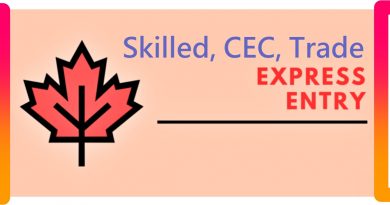Report Targets B.C.’s Labour Market Challenges
Greater Vancouver Board of Trade rolls out road map to address B.C.’s rapidly rising skills deficit and labour shortage.
 PDF: SOLVING B.C.’S WORKFORCE CHALLENGES PREPARING FOR THE JOBS OF TODAY AND TOMORROW
PDF: SOLVING B.C.’S WORKFORCE CHALLENGES PREPARING FOR THE JOBS OF TODAY AND TOMORROW
The Greater Vancouver Board of Trade (GVBOT) has released a detailed road map to remedy the escalating human resource deficit plaguing B.C.’s business community.
Solving B.C.’s Workforce Challenges provides a detailed inventory of recommended actions and directions aimed at bridging current and future gaps between available workers and job vacancies in B.C.
That gap today totals approximately 150,000 job vacancies and promises to widen to over one million over the next 10 years as a projected 700,000 workers are set to retire.
Metro Vancouver is also burdened with a high cost of living and a limited inventory of affordable housing.
Little wonder then that, according to the quarterly Canadian Survey of Business Conditions in Metro Vancouver, Metro Vancouver businesses consistently rank difficulty in attracting, recruiting and retaining talent as among their most significant challenges.
The cost of the labour gap is significant for more than individual companies. Skills deficits have already cost B.C. up to $4.7 billion in foregone GDP and $616 million in tax revenue, according to a Conference Board of Canada report cited by the GVBOT.
The GVBOT report, which is based on conversations with more than 5,000 members, schools, government and community partners, offers directions to align education and career paths with the skills that are in the highest demand.
Its recommendations also focus on making B.C. a global leader in digital skills and ensuring that all British Columbians have access to employment opportunities.
Bridgitte Anderson, the GVBOT’s president and CEO, said it is critical for government, schools and businesses to form “a new partnership and embrace innovative approaches to ensure our economy can manage an aging demographic while becoming a global hub for technology and innovation, with sustainability and resilience at the core.”
She told BIV that the report is the first time the GVBOT has “really delved deeply into this subject And it comes about because we’ve seen such rapid changes in the workforce. A lot of weakness was exposed during the pandemic, and there’s so much uncertainty now around the economy, climate change. We often survey our members, and for a considerable amount of time [they] have been saying that they are having significant challenges attracting and retaining talent. And they’re also saying that this is costing their businesses.”
With B.C.’s unemployment rate at 4.2 per cent and Canada’s hovering around 5.1 per cent, the GVBOT said the provincial government needs to take immediate action to maximize provincial labour force participation.
Its recommendations on that front include:
- removing registration requirements for out-of-province health-care workers and working with professional associations to accelerate recognition of foreign credentials, especially in high-demand occupations such as health care, where the number of job vacancies jumped 91 per cent in 2022’s first quarter compared with the same quarter in 2020;
- cutting the employer registration process for the Temporary Foreign Worker program to a maximum of three days from eight to 10 weeks; and
- increasing investments in experiential learning opportunities.
Anderson added that there needs to be new approaches for involving under-represented sectors of B.C.’s population in the workforce.
“For example, setting up an office for Indigenous employment that would be a one stop shop. The Indigenous community is one of the fastest growing communities we have, and they are under-represented in the workforce.”
Cultivating tech talent and aligning B.C.’s education system with the province’s job market needs are also priority points on the GVBOT’s labour challenges road map.
It notes that, to varying degrees, every job today is a technology job. Skills training and education system curriculums therefore need to be retooled to reflect that fundamental change in 21st century employment potential and career development.
GVBOT recommendations to achieve that goal include creating an index that ranks workplace digital skills readiness across all age groups and collaborating with post-secondary education institutions and the private sector to increase the number of micro-credential programs focused on occupations with the highest vacancy rates.
The disconnect between the province’s education system and its job market also needs addressing.
Anderson said that young people need to be exposed to more job market options and marketable workforce skills while they are in the province’s school system.
“So, one way to do that is [through] internships or co-ops and to really expand what is being offered now. Many post-secondaries do offer co-op programs, but they should be broad based, and young people should have an opportunity to learn hands-on in the workplace.”





